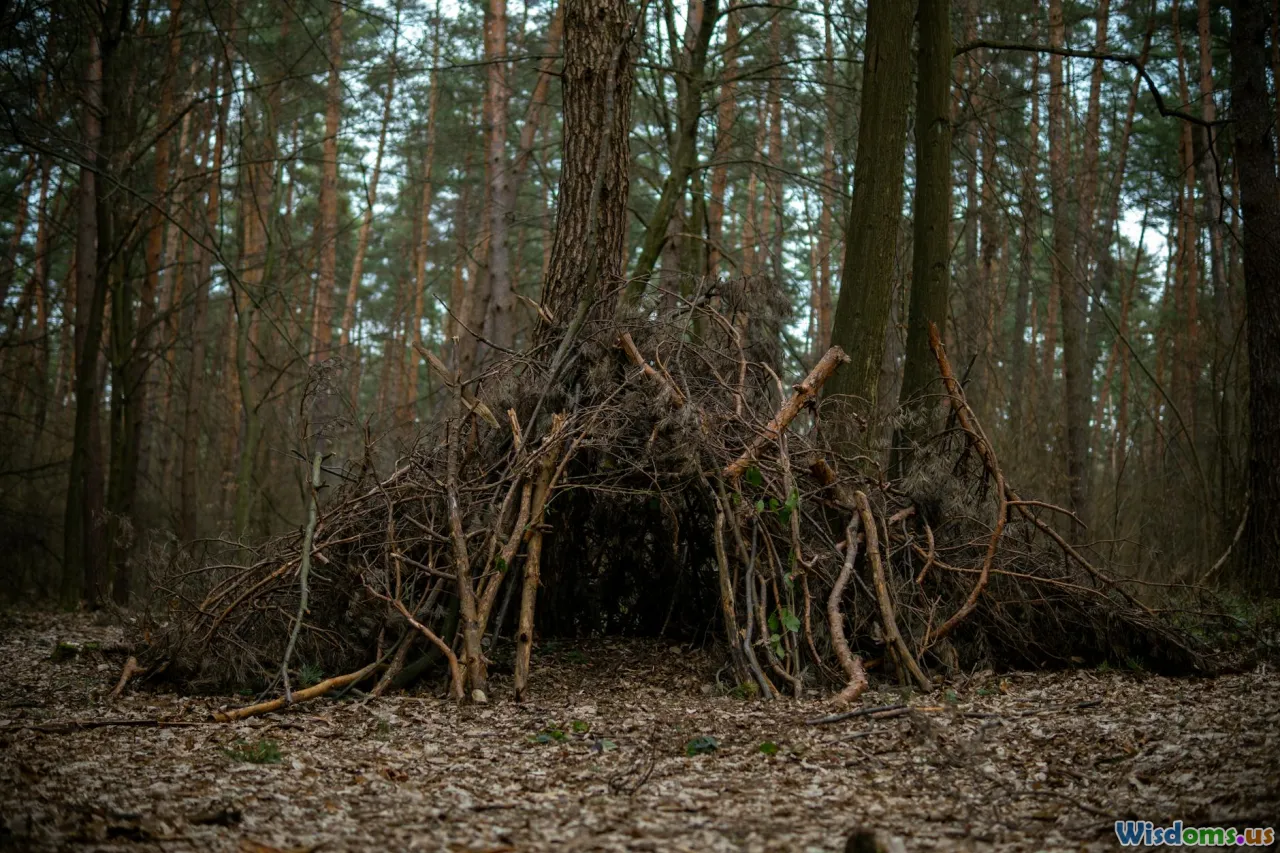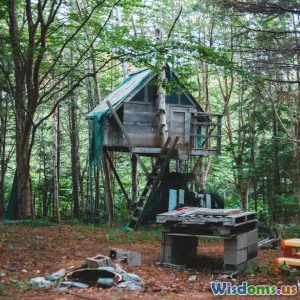
How to Build a Shelter in the Wild
8 min read Master essential survival skills by learning how to build a durable shelter in the wild with practical tips and expert advice. (0 Reviews)
How to Build a Shelter in the Wild: A Complete Survival Guide
Imagine you’re deep in the wilderness after an unplanned night outdoors. The temperature is dropping, the wind is picking up, and your survival depends largely on how well you can protect yourself from the elements. Building a shelter is not just a rudimentary skill; it is a critical step in survival. This guide will walk you through everything you need to know about constructing a shelter in the wild — using practical methods backed by experience and science.
Understanding the Importance of Shelter in Survival
Before diving into techniques, it’s important to grasp why shelter is vital. Exposure to harsh weather is one of the top causes of injury or death when stranded outdoors. According to the Federal Emergency Management Agency (FEMA), hypothermia can occur even in mild weather when combined with wet conditions and wind, accelerating heat loss.
Shelters provide:
- Protection from rain, snow, and wind
- Insulation to preserve body heat
- A psychological boost through creating a safe space
Renowned survival expert Les Stroud, known for Survivorman, emphasizes: “A good shelter buys you time. Time is your greatest asset in a survival situation.”
Section 1: Selecting the Ideal Location
The first step in building an effective shelter is picking the right site.
Factors to Consider
- Terrain: Look for flat ground to sleep comfortably but avoid depressions which can collect cold air or rainwater.
- Natural Barriers: Position near natural windbreaks like thick shrubs, large rocks, or hillsides.
- Proximity to Resources: Water sources are important, but avoid setting up too close (minimum 200 feet) to limit insect activity and flooding risk.
- Safety: Check for hazards such as loose rocks, dead tree limbs (widowmakers), or signs of animal activity.
Example: The U.S. Army’s survival manual stresses avoiding low-lying areas during cold weather to prevent cold air pooling.
Section 2: Types of Wilderness Shelters
Understanding the different shelter types allows you to adapt based on available resources.
Debris Hut
Familiar among primitive survival shelters, the debris hut uses a framework of sticks covered with leaves and debris.
- Pros: Excellent insulation when properly constructed
- Cons: Time-consuming to build
Lean-to
This shelter involves leaning branches against a standing support like a fallen log or a sturdy tree.
- Pros: Quick to build and easy to modify
- Cons: Provides moderate protection; less insulated
Tarp Shelter
If you have a tarp (or large plastic sheet), create versatile structures such as A-frames or flat lean-tos.
- Pros: Lightweight, effective against rain
- Cons: Requires additional insulation
Snow Cave (Winter Only)
Used by experienced adventurers to create insulated shelters in snow.
- Pros: Traps heat effectively
- Cons: Requires sufficient snow depth and skill
Tip: Use YouTube channels from survival experts like Ray Mears for visual references.
Section 3: Building Your Shelter - Step by Step
Step 1: Gather Materials
- Wood: Collect dry branches 1–2 inches thick for framing.
- Debris: Leaves, pine needles, grass for insulation.
- Tools: Knife, axe, or sharp rock if available.
Step 2: Construct the Framework
- Establish a ridgeline or lean framework based on the shelter type.
- Secure the structure by wedging sticks firmly into the ground or using natural bindings.
Step 3: Add Insulation
- Cover the framework thickly with leaves, moss, or pine boughs—aim for a layer at least 12 inches deep.
- Ensure coverage is uniform to minimize cold spots.
Step 4: Build a Comfortable Interior
- Create a raised bed of branches covered by dry debris to insulate you from the cold ground.
- Leave an entrance just big enough to crawl through to conserve heat.
Step 5: Test Your Shelter
- Before settling in, check for drafts or structural weakness.
- Improve with additional insulation or reinforcement as needed.
Real-World Insight: Survival instructors often advocate practicing shelter building in safe conditions before actual emergencies to speed up the process.
Section 4: Advanced Tips for Shelter Efficiency
Use of Natural Insulators
Materials like sphagnum moss and dry grasses have superior insulating properties. Even dry pine needles can reduce heat loss significantly.
Enhancing Warmth
- Reflective materials (like emergency foil blankets) can be placed on the interior walls.
- Build a small rock wall or wind barrier on the windward side.
Ventilation Considerations
Prevent condensation by allowing a small air leak, which helps avoid hypothermia caused by dampness.
Camouflaging Your Shelter
If you need to avoid detection (in survival situations involving potential threats), use natural colors and avoid shiny or unnatural materials.
Conclusion: Shelter as Your Survival Cornerstone
Building a shelter in the wild is a vital survival skill that saves lives by protecting you from the environment. It requires observation, resourcefulness, and some fundamental knowledge—qualities every adventurer can develop. Remember that a well-constructed shelter not only preserves warmth and safety but also strengthens resilience during stressful survival scenarios.
Inspired by experts and backed by scientific guidance, your journey toward mastering shelter building can begin today. Practice different shelters in varied environments to hone skills and boost your confidence. After all, in the wild, your shelter might just be your safest ally.
References
- Federal Emergency Management Agency (FEMA) Survival Manual
- Les Stroud, Survivorman Interviews
- U.S. Army Field Manual FM 3-05.70, Survival
- Ray Mears: BBC Wilderness Survival Tutorials
Preparedness is empowerment. Build your shelter, embrace the wild, and survive.
Rate the Post
User Reviews
Popular Posts




















